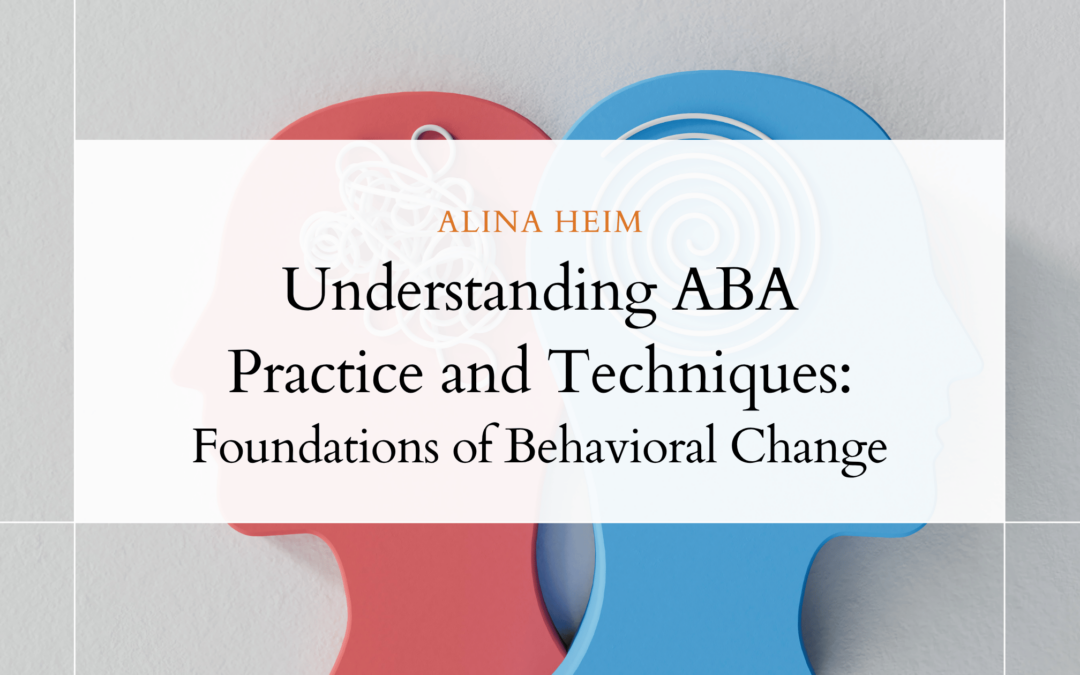Applied Behavior Analysis (ABA) is a scientific approach to understanding behavior and how it is affected by the environment. ABA techniques are widely used in various settings, including therapy for individuals with autism, school behavior support, organizational behavior management, and even animal training. This blog will explore foundational ABA practices and techniques, highlighting the key components that make this discipline both effective and evidence-based.
What is ABA?
At its core, ABA is grounded in the principles of learning theory. It focuses on observable behavior, uses systematic interventions, and relies heavily on data to guide decision-making. The primary goal of ABA is to increase socially significant behaviors and reduce behaviors that interfere with learning and quality of life.
Core Techniques in ABA
- Reinforcement
Reinforcement is one of the most fundamental concepts in ABA. It involves providing a consequence that increases the likelihood of a behavior recurring. Positive reinforcement adds a desirable stimulus (e.g., praise or a reward), while negative reinforcement removes an aversive stimulus (e.g., reducing noise after compliance). - Prompting and Fading
Prompts are cues or assistance given to help a learner perform a desired behavior. These may be physical, verbal, visual, or gestural. Over time, prompts are gradually faded to ensure the individual can perform the behavior independently. - Shaping
Shaping involves reinforcing successive approximations of a target behavior. This method is useful when teaching complex skills that are not likely to occur naturally without guidance. - Task Analysis and Chaining
Task analysis breaks down a complex skill into smaller, manageable steps. Chaining is the process of teaching these steps either from the beginning (forward chaining), the end (backward chaining), or as a whole (total task presentation). - Extinction
Extinction occurs when a previously reinforced behavior no longer receives reinforcement, leading to a decrease in that behavior. It’s often used in conjunction with reinforcement of alternative behaviors. - Discrete Trial Training (DTT)
DTT is a structured ABA technique that involves clear, concise instruction, prompting, reinforcement, and repetition. It is often used in early intervention programs for children with autism. - Natural Environment Teaching (NET)
Unlike DTT, NET occurs in more naturalistic settings and incorporates the learner’s interests. It focuses on generalization of skills and making learning meaningful in real-life contexts.
Importance of Individualization
One of the most critical aspects of ABA practice is its emphasis on individualized interventions. Techniques are chosen based on the unique needs, strengths, and preferences of each individual. This ensures that interventions are not only effective but also socially valid and respectful.
Data-Driven Decision Making
ABA is a data-heavy discipline. Practitioners continuously collect and analyze data to monitor progress, adjust interventions, and ensure accountability. This emphasis on objective measurement sets ABA apart from many other behavioral approaches.
Ethical Considerations
ABA must always be practiced ethically, with a focus on the dignity and autonomy of the individual. Practitioners are guided by the Behavior Analyst Certification Board (BACB) ethics code, which emphasizes consent, transparency, cultural sensitivity, and evidence-based practice.
Conclusion
ABA is a powerful framework that uses scientifically validated techniques to bring about meaningful behavioral change. Whether applied in clinical, educational, or community settings, its principles remain the same: understand behavior, apply effective strategies, and use data to guide practice. As ABA continues to evolve, ongoing research and professional development are essential to ensuring it remains ethical, effective, and person-centered.

